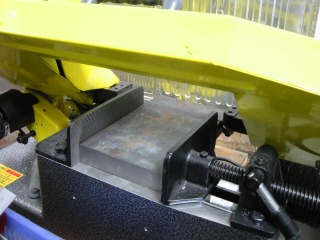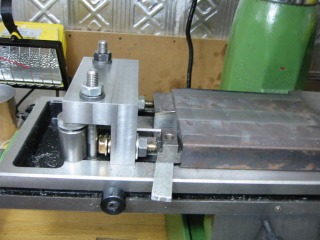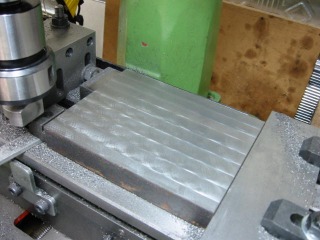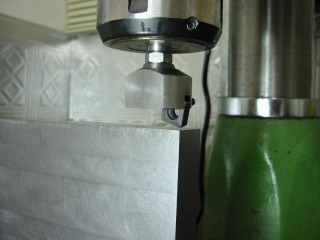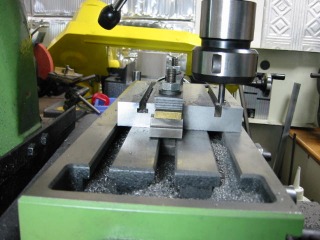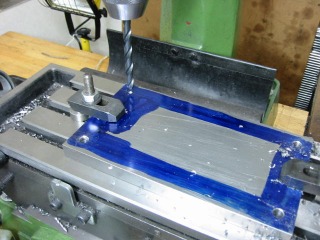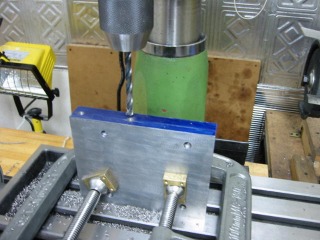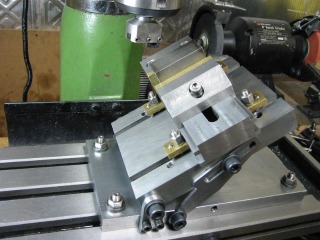| TILTING ANGLE TABLE | |
|
This article shows the making of a tilting angle table which can hold a vise or rotary table. Also, a workpiece may be directly mounted on it. The table can be fixed firmly at any angle within its range of 0 to 90 degrees. The top plate is cast iron, 125 mm wide, 160 mm long, and 25 thick. The base plate is mild steel, 125 mm wide and 225 mm long, and 16 mm thick. The total weight is 6.8 Kg. As show below the top plate has two t-slots, sized the same as my
lathe cross-slide, so all of the accessories are interchangeable. The four
threaded holes in the top plate are used to mount an Index Table or Vise.
|
|
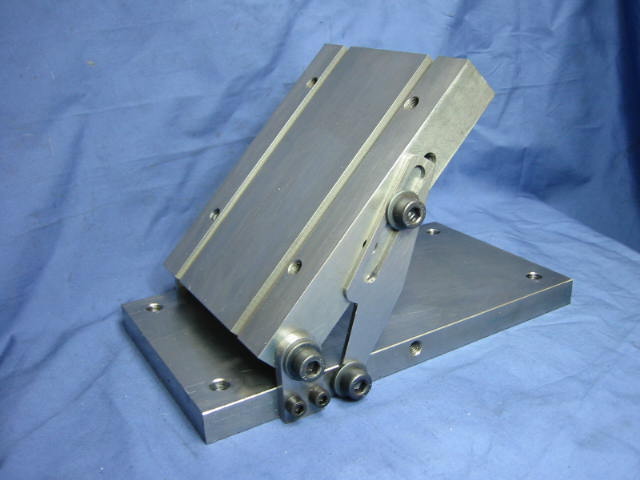 |
|
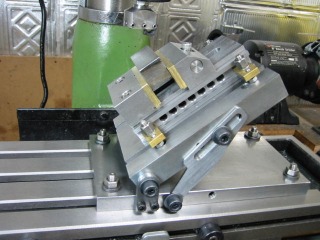 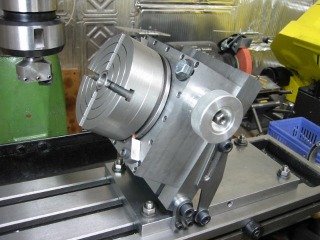 |
|
